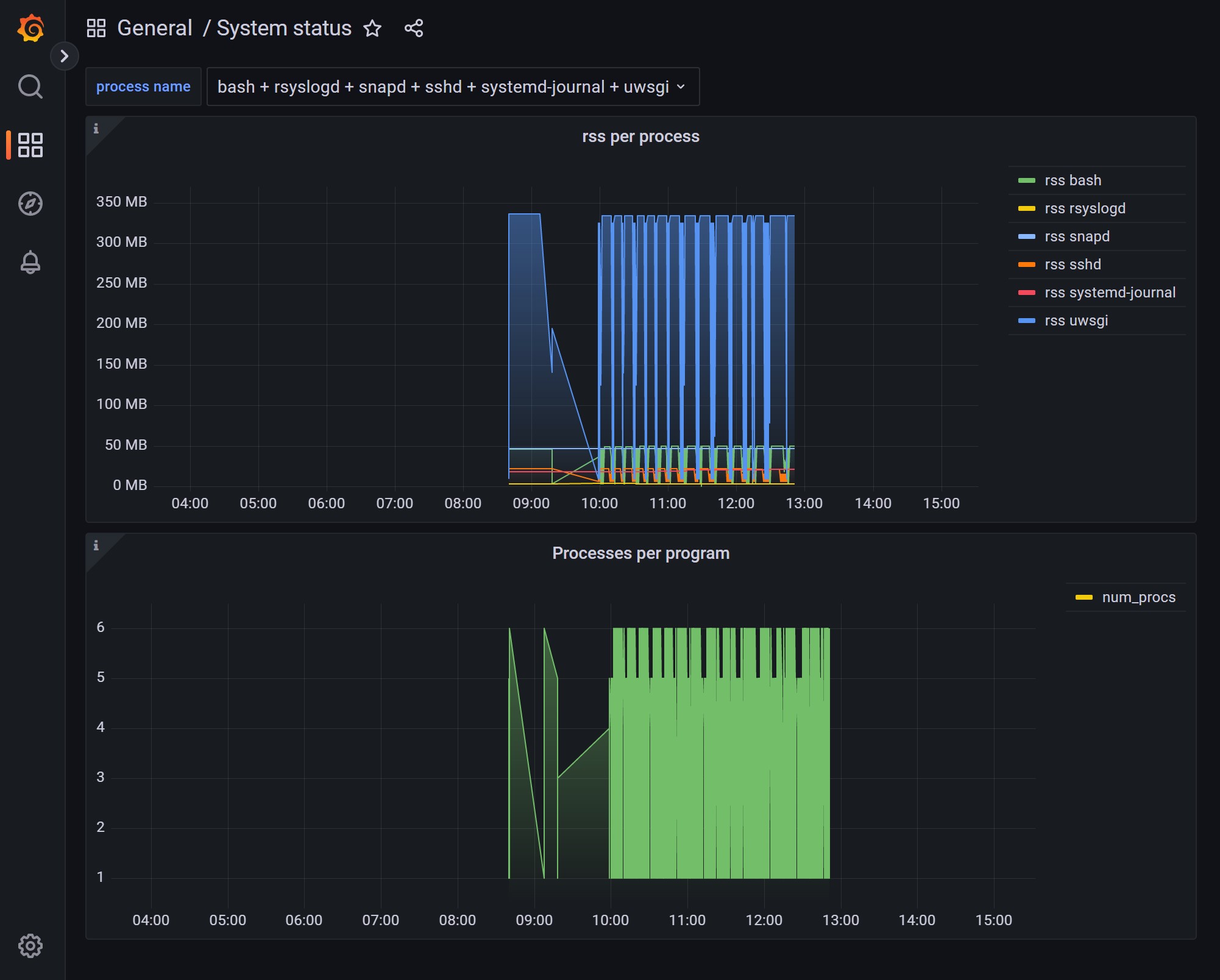Sounds interesting and I'll take a look either way. What would really help me out though, would be an example query (preferably with a CTE as data source) that I could pop in to Postgres to see how they handle it.
I assume the Postgres data source (as an example of a native SQL data source) already implements the desired behavior?
 In the image above, the 3 time-series are added as individual Grafana query. It requires exact knowledge of how to query each individual time-series. This is the least ideal solution, but it is supported this way today. Note, that I'm not sure how to control the label showing
In the image above, the 3 time-series are added as individual Grafana query. It requires exact knowledge of how to query each individual time-series. This is the least ideal solution, but it is supported this way today. Note, that I'm not sure how to control the label showing  In the image above, the 3 time-series are added via a single SQL query in a single Grafana query. To achieve the 3 time-series in one, it is required by this plugin to have the 3 time-series as separate columns. This means a dataset that has all in one table needs to be transposed from an inner query, or other ways would require two joins. This also requires exact knowledge of the dataset contents and is tedious to use if we have something like 100 time-series.
In the image above, the 3 time-series are added via a single SQL query in a single Grafana query. To achieve the 3 time-series in one, it is required by this plugin to have the 3 time-series as separate columns. This means a dataset that has all in one table needs to be transposed from an inner query, or other ways would require two joins. This also requires exact knowledge of the dataset contents and is tedious to use if we have something like 100 time-series.

For a hypothetical query like this one:
The query itself selects which timeseries are to appear, it prepares the data into 3 columns with predefined names.
Expectation: The
grafana-sqlite-datasourceplugin should produce a graph that shows all 3 timeseries (myexperiment_type) and the label for these timeseries should be the value I specify as thelabelcolumn, they are time-indexed by thetimestampcolumn and valued by thevaluecolumn.Exact column naming is up to the maintainers but ability to select multiple timeseries in one query is the essence of this RFC.